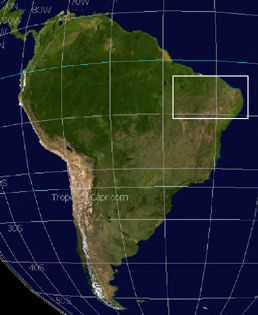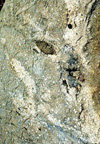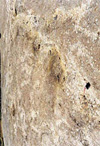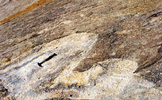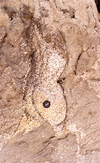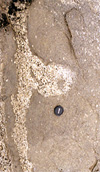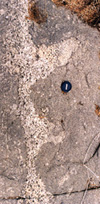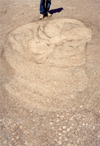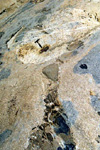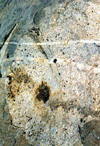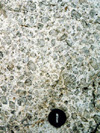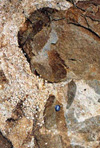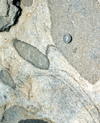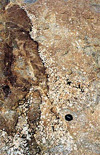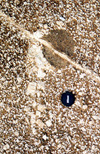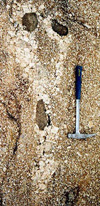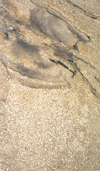Uncommon Magmatic Structures in Granites of the Borborema ProvinceRoberto Weinberg, Monash University, Australia |
|
K-rich
granites of the Borborema Province in NE Brazil present a large
number of uncommon magmatic structures which convey the dynamic history
of the magma chamber. Some of these structures were of relatively
simple interpretation (Weinberg et al., 2001). However, there are many
other enigmatic features
which are presented here.
These structures are more than curiosities. They tell us something about chamber dynamics. The purpose here is to illustrate the structures and trigger discussions, ideas and potential collaborations. If you want to help expand this site or connect your own related page to this one please let me know. Weinberg,
R.F.,
Sial, A.N., and Pessoa,
R.R. 2001, Magma flow within the Tavares Pluton, NE Brazil:
Compositional and thermal convection. Geol. Soc. Am. Bull. 113, 508-520
+ cover image. CLICK ON ANY PHOTO FOR HIGH RESOLUTION VERSION |
Magmatic Structures
Random aggregate patches in homogeneous granite
Aggregate layers: unidirectional protrusions
Ellipsoidal structure
Aggregates at enclave margins
Aggregate spheroid and mafic enclave dyke
Other aggregate-mafic association
Feldspar Aggregate Structures
Random aggregate patches
|
A) Boqueirao Pluton
|
B) Itaporanga Pluton
|
Aggregate Layers: Unidirectional Structures
|
A) K-feldspar megacryst aggregate forming a 20m long band (to right the photograph). with a flat straight bottom and a hilly top. The country rock is a megacrystic granite/granodiorite, Tavares Pluton.
|
B) More mafic granitic batch (at the bottom) associated with feldspar aggregate, Campina Grande pluton. See also Aggregates at enclave margins, in particular Fig. F
|
|
C) Unidirectional mounds on a K-feldspar aggregate layer, Campina Grande pluton.
|
D) Same outcrop as C) and same orientation, Campina Grande pluton
|
Ellipsoid Aggregate Structure
|
Aggregate of K-feldspar forming an ellipsoidal structure. This structure is related to other ellipsoidal structures and to ladder dykes. Conceicao das Creoulas pluton.
|
Feldspar Aggregates Spheroid and Mafic Enclave Dyke
Feldspar megacryst spheroid linked to disaggregated mafic dyke
|
A) Aggregate spheroid related to a curved mafic enclave dyke
|
B) Aggregate spheroid
|
C) Detail inside aggregate
|
Aggregates at enclave margins
|
A) Megacryst aggregate filter pressed where mafic pillows separated
|
B) Curved schlieren indicating magma flow in between enclaves
|
C) Megacryst aggregate around mafic pillow
|
|
D) Helicoid: mafic enclave and nest of megacrysts rotated by magma flow
|
E) Mafic enclaves surrounded by a nest of megacrysts, stretched by magma flow
|
|
Liked the structures? Want to know more? Contact me on my email
